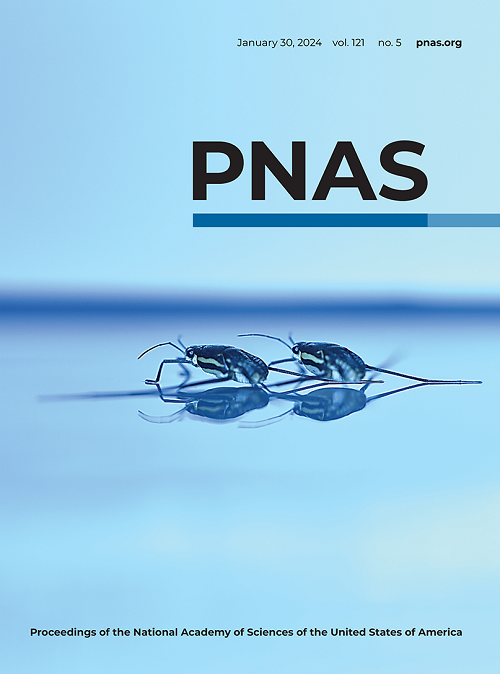Conserved C143 forms a branched intermediate in Hedgehog autoprocessing: A cancer drug discovery target against Hedgehog signaling
IF 9.4
1区 综合性期刊
Q1 MULTIDISCIPLINARY SCIENCES
Proceedings of the National Academy of Sciences of the United States of America
Pub Date : 2025-04-24
DOI:10.1073/pnas.2415144122
引用次数: 0
Abstract
Hedgehog (Hh) signaling plays fundamental roles in embryonic development while its abnormal activation in adults is associated with cancer. Hh targeting drugs have gained FDA approval but resistance emerged quickly, underlining the need for novel types of Hh inhibitors. Hh signaling is initiated by the Hh ligand, generated from the autoprocessing of Hh precursor. However, the catalytic role of a highly conserved Hedgehog residue C143 is still poorly understood. Here, we confirmed that C143 is required for Hh autoprocessing in mammalian cells. NMR titration showed that C143 has an extremely low pK保守的C143在Hedgehog基因自动加工中形成一个分支中间体:一个针对Hedgehog信号的抗癌药物发现靶点
Hedgehog (Hh)信号在胚胎发育中起着重要作用,而其在成人中的异常激活与癌症有关。Hh靶向药物已获得FDA批准,但耐药性迅速出现,强调了对新型Hh抑制剂的需求。Hh信号是由Hh配体启动的,由Hh前体的自动加工产生。然而,高度保守的Hedgehog残基C143的催化作用仍然知之甚少。在这里,我们证实了C143是哺乳动物细胞中Hh自动加工所必需的。核磁共振滴定表明,C143具有极低的pK - a,为4.5,符合高活性的催化残基。我们进一步确定Hh自动加工涉及一个具有两个n末端的分支中间体(BI),在C143侧链上形成硫酯。BI在SDS-PAGE上的迁移速度比线性Hh前体慢,并在DTT治疗后消失。通过胰蛋白酶消化和LC-MS /MS,我们检测到BI的n端片段,这是线性Hh前体中不存在的。因此,C143在Hh自动加工过程中介导了BI硫酯的形成,其催化作用相当于C + 1在内部剪接中的催化作用。这些发现使我们更接近于对Hh自动加工的完整机制理解,同时将Hh自动加工的前两个催化步骤与内部剪接(其可能的进化前身)统一起来。C143也可以作为共价药物的靶点,抑制癌症中的Hh信号。
本文章由计算机程序翻译,如有差异,请以英文原文为准。
求助全文
约1分钟内获得全文
求助全文
来源期刊
CiteScore
19.00
自引率
0.90%
发文量
3575
审稿时长
2.5 months
期刊介绍:
The Proceedings of the National Academy of Sciences (PNAS), a peer-reviewed journal of the National Academy of Sciences (NAS), serves as an authoritative source for high-impact, original research across the biological, physical, and social sciences. With a global scope, the journal welcomes submissions from researchers worldwide, making it an inclusive platform for advancing scientific knowledge.

 求助内容:
求助内容: 应助结果提醒方式:
应助结果提醒方式:


